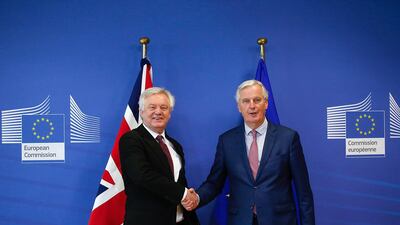The two sides reached an agreement for a transition period that’s due to start on Brexit day in March next year. Officials also said progress had also been made on a broader withdrawal treaty that will set the terms of future ties.
While British Brexit Secretary David Davis said a good deal was now closer than ever, the transition arrangement is weaker than initially imagined.
When it was first proposed, the idea was that the future trading relationship would already be clear and the grace period would allow for the implementation of the new regime.
Read more: Surprise UK-EU Brexit deal spurs pound
The pound rallied, even if the reaction from business was lukewarm. The transition agreement won’t be legally binding until the final withdrawal treaty is signed, which won’t be until next year. Chief EU negotiator Michel Barnier said that “nothing is agreed until everything is agreed.”
To get this far the UK had to make concessions where it vowed to fight earlier this year. It has backed down on the rights of citizens coming to the UK after Brexit day, and has accepted a slightly shorter transition period than the one it originally wanted. The EU has promised to act in good faith, a hint that it won’t pass laws during the transition period -- when the UK has no vote -- which would damage the Britain.
The Irish issue has continued to dog talks, and a new temporary compromise on the wording of the withdrawal agreement has now been agreed. Prime Minister Theresa May said the EU’s proposal - which would have put a border between Northern Ireland and Britain in a worst-case scenario - was something no prime minister could accept.
________________
Brexit latest
Brexit splits opinions in Switzerland
In setback to May Unilever ditches London for Rotterdam
________________
The two sides agreed that there needed to be a backstop plan for the Irish border - but remain divided on what it should be.
With the transition is going to be used to complete trade talks, businesses have called for a second transition, once the terms of the new relationship are clear.
“Both sides should commit now to a finite adjustment period once a new trade agreement has been finalised,” the Institute of Directors said in a statement.

